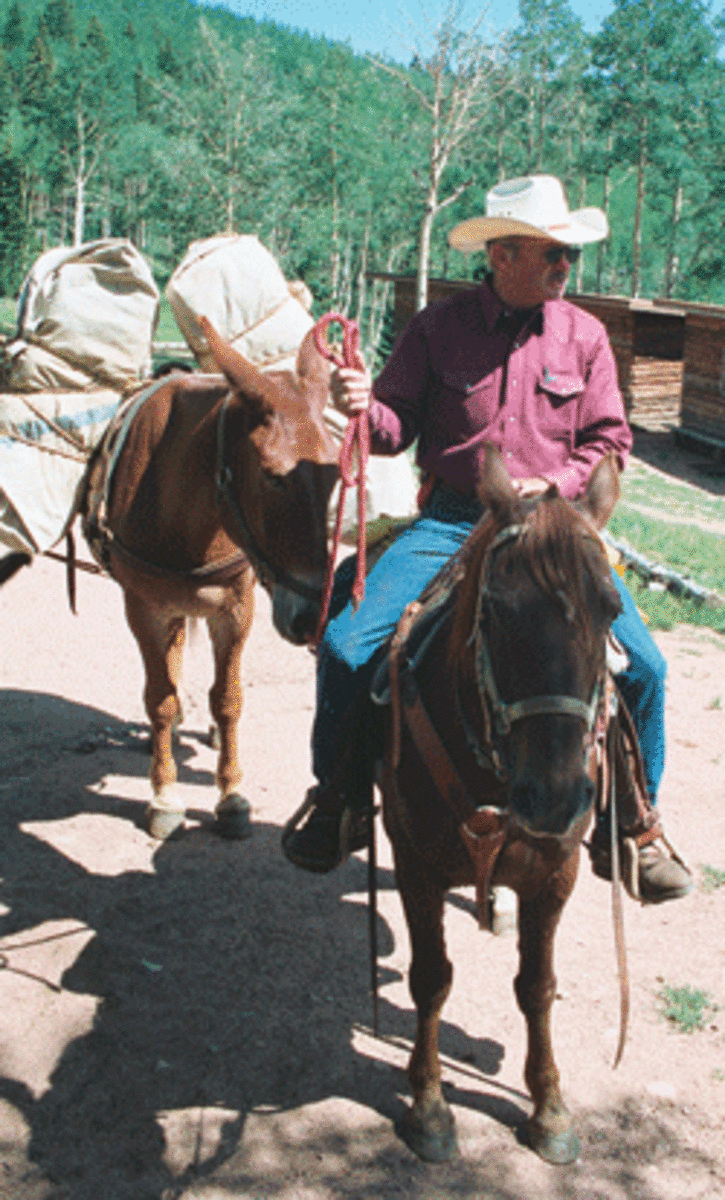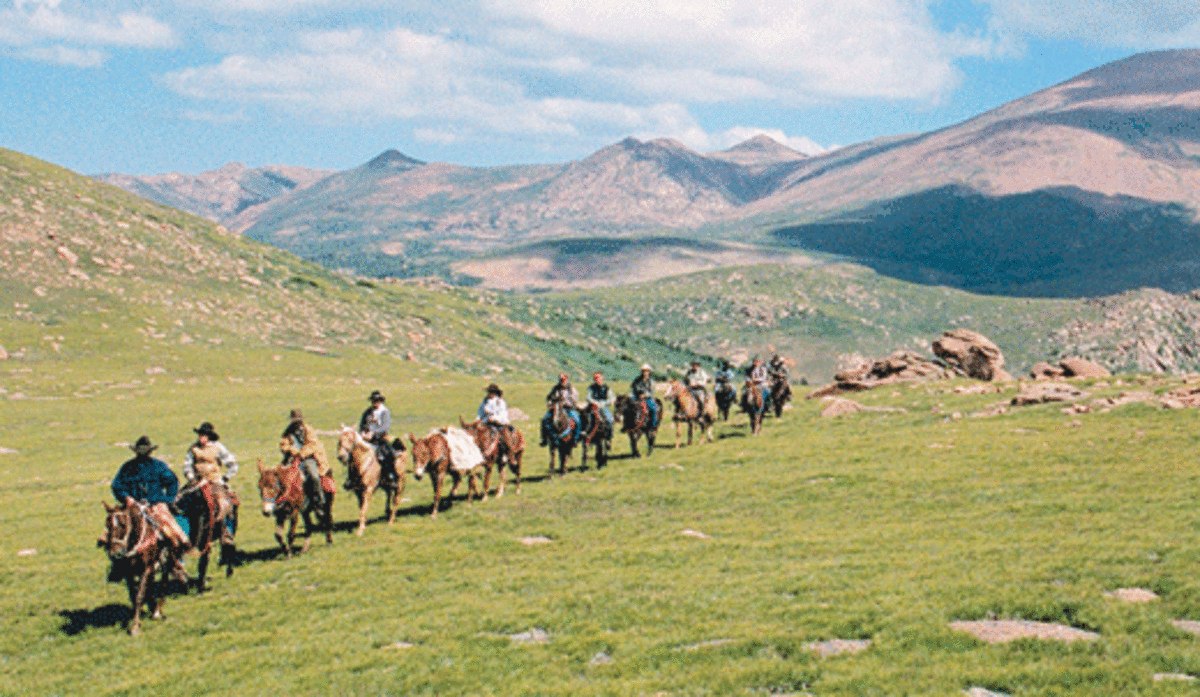
It’s a gorgeous July day high in the Rocky Mountains. More than a dozen riders are strung out well above the timber line. Suddenly the man on the lead horse motions for silence. Just 100 yards away lie six bighorn sheep rams.
The rams can’t smell us, and for a couple very precious minutes, the animals have no idea we’re here. But soon, they jump up and dash off. Photos won’t do this scene justice. But what a moment. Just imagine getting paid to have this kind of experience on a regular basis.
That’s exactly what most of the people on this ride hope to do. For this memorable day in the saddle is part of the four-week curriculum of the Colorado Outdoor Adventure Guide School. This program is designed for those who seek to become professional outfitters, but any trail rider will learn valuable horsemanship, packing, and camping skills. Read on to find out if this school is for you.
Focus on the Outdoors
COAGS, as it’s known, was founded by the man who spotted those sheep, 55-year-old Gary Jordan. He’s been in love with the American West ever since he was a toddler on a Texas ranch, listening to his grandfather’s stories.
After years of work in the guiding and outfitting business in the West, he temporarily traded a saddle for a business suit. His financial success gave him the resources to purchase a beautiful piece of land on the southwest slope of Pikes Peak he calls Gold Camp Ranch, headquarters for COAGS.
The 150-acre property is the picturesque home of some three dozen horses and mules, but it’s not a dude ranch. And COAGS isn’t a vacation. You’ll pay $1,250 per week for the four-week course, bunking together in cabins that aren’t primitive, but certainly aren’t luxurious.
But the focus here isn’t on the indoors, it’s guiding guests in the outdoors, especially on horseback. “Horsemanship, orienteering, compass work, map work, survival – just the amount that Gary throws at you in a day was just incredible,” recounts student Bruce Conner. “But fun too! And definitely helpful.”

‘Basic’ Training
The first two weeks at COAGS are known as the “basic” program, with a heavy emphasis on horsemanship. Your instructors will be Gary Jordan and his right-hand man, Jeff Miner. Miner has spent more than a dozen years guiding, packing, and running his own outfitting business in the Rocky Mountains. Horsemanship skills include the care and feeding of the school’s seasoned horses and mules.
Says Miner, “I’m teaching them what I would expect from them if they were actually going to work for us.”
And much is expected. Other tasks include the difficult job of setting up giant wall tents the size of a small cabin, training to become a competent cook, mastering a Dutch oven, and learning how to create the kinds of meals guests paying thousands for a Western vacation would expect.

Backcountry Horse Trip
The program’s third week is the toughest, when you’ll put all those skills to work on a backcountry horse trip. Before you can do that, though, there’s another big challenge: learning how to pack all those tents, cook stoves and other gear on the back of a mule, and lead a string through the wilderness.
“You see a picture of a guy leading the pack horse or mule; it looks so romantic and so neat,” says 57-year-old student Al Germain. “But when you try to come out here and do it, you realize how hard it is.”
By Wednesday of Week 3, basic training is complete. You’ll know how to tie and pack loads, and lead mules through forests, and over logs and creeks. Time to load the gear for real, head out on the pack trip, and set up camp.
It’s back-breaking work. Nineteen-foot-long poles are cut for the wall tents’ center
beam. Firewood must be gathered and cut by hand. An entire working kitchen is assembled. Feed for the stock must be hauled in, plus extra bridles, leather repair tools, horseshoes, fly spray, ointment, and more.
Beautiful Country
Those who graduate from COAGS and go on to careers as guides, packers, and wranglers will probably never get rich. Starting pay is usually only $1,500 a month. And hauling gear through the wilderness on ornery mules and leading sometimes cranky clients never gets easy. So – apart from your own enrichment – why do it?
The answer came on the day we saw those bighorn sheep, riding out in the early morning darkness, through misty meadows, up steep, rocky trails, then high above the tree line. Spotting a magnificent herd of some 70 elk. And another herd of 40 bighorn ewes and lambs. Eleven hours in the saddle through some of the most beautiful country God ever created.
“If the last 24 hours seem like a lot of trouble, don’t go there,” advises Jordan. “If it seems like fun, like a nice challenge, and a nice story, memories, and so forth, then you may have what it takes.”






